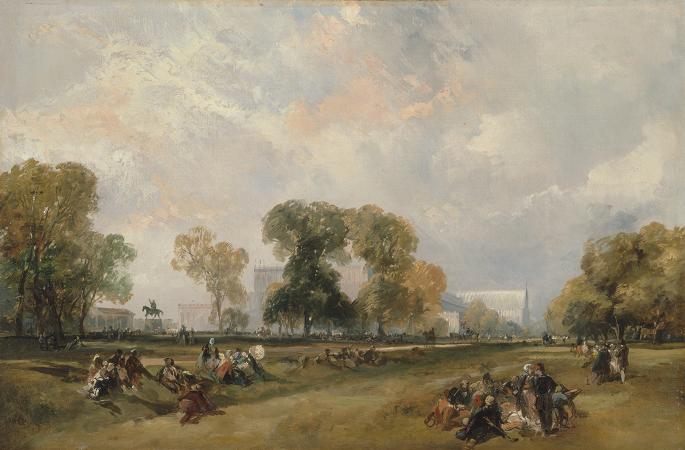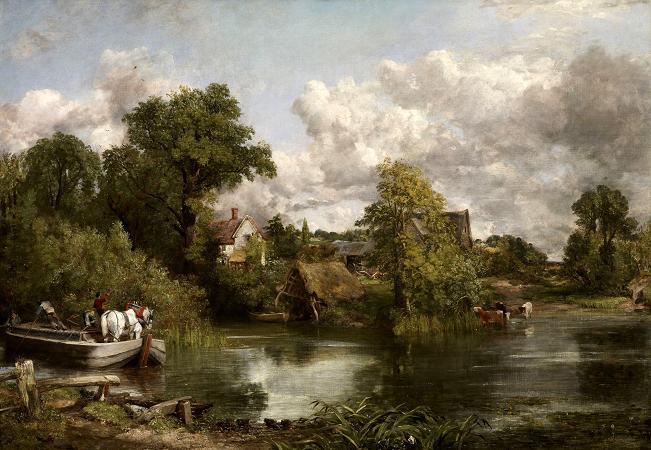Picturesque. Picturesque is an aesthetic ideal introduced into English cultural debate in 1782 by William Gilpin in Observations on the River Wye, and Several Parts of South Wales, etc. Relative Chiefly to Picturesque Beauty; made in the Summer of the Year 1770, a practical book which instructed England's leisured travellers to examine the face of a country by the rules of picturesque beauty. Picturesque, along with the aesthetic and cultural strands of Gothic and Celticism, was a part of the emerging Romantic sensibility of the 18th century. The term picturesque needs to be understood in relationship to two other aesthetic ideals: the beautiful and the sublime. By the last third of the 18th century, Enlightenment and rationalist ideas about aesthetics were being challenged by looking at the experiences of beauty and sublimity as being non-rational. Aesthetic experience was not just a rational decision-one did not look at a pleasing curved form and decide it was beautiful; rather it came naturally as a matter of basic human instinct. Edmund Burke in his 1757 A Philosophical Enquiry into the Origin of Our Ideas of the Sublime and Beautiful argued that the soft gentle curves appealed to the male sexual desire, while the sublime horrors appealed to our desires for self-preservation. Picturesque arose as a mediator between these opposed ideals of beauty and the sublime, showing the possibilities that existed in between these two rationally idealised states. As Thomas Gray wrote in 1765 of the Scottish Highlands: The mountains are ecstatic. None but those monstrous creatures of God know how to join so much beauty with so much horror. See also Gilpin and the picturesque. The picturesque as a topic in discourse came up in the late renaissance in Italy where the term pittoresco began to be used in art writing as seen with Italian authors as Vasari, Lomazzo, or Ridolfi. The word is applied to the manner of depicting a subject in painting, roughly in the sense of non-classical or painted non-academically in a similar way as Dutch painters discussed developments in painting in the seventeenth century as painter-like. Highly instrumental in the establishing of a taste for the picturesque in northern Europe was landscape painting, in which indeed the realism of the Dutch played a significant role. This cannot be seen separated from other developments in Europe. Claude Lorrain was a well-known French painter, who had developed landscape painting in Rome, like Poussin. Both painters worked in a kind of stiff, mannered style, with a focus on archaeological remains and towering pine trees, followed by several Dutchmen who had also traveled to Rome. Soon, deviating from the classical ideal of perfection in beauty epitomized by healthy, towering trees, landscape painters came to discover the sublimity of the withered old tree, the two withered oaks by Jan van Goyen are a well-known example. For those who tried to find an answer to the classicism of French landscape painting, the lonely spruce at a wild cataract that caught the sublimity of nature became a recurring theme, most explicitly expressed by Jacob van Ruisdael. This painter painted picturesque garden scenes that can be seen as early representations of picturesque gardens in Europe. Similar landscape naturalism in English gardens emerged within cultural spheres around William and Mary from which the discussion on the picturesque in the English landscape took hold. In England the word picturesque, meaning literally in the manner of a picture; fit to be made into a picture, was a word used as early as 1703, and derived from French pittoresque and the Italian pittoresco. Gilpin's Essay on Prints defined picturesque as a term expressive of that peculiar kind of beauty, which is agreeable in a picture. The pictorial genre called Picturesque appeared in the 17th century and flourished in the 18th. As well as portraying beauty in the classical manner, eighteenth-century artists could overdo it from top to bottom. Their preromantic sensitivity could aspire to the sublime or be pleased with the picturesque. According to Christopher Hussey, While the outstanding qualities of the sublime were vastness and obscurity, and those of the beautiful smoothness and gentleness, the characteristics of the picturesque were roughness and sudden variation joined to irregularity of form, colour, lighting, and even sound. The first option is the harmonic and classical; the second, the grandiose and terrifying; and the third, the rustic, corresponding to the picturesque and connecting qualities of the first two options. This triple definition by Hussey, although modern, is true to the concept of the epoch, as Uvedale Price explained in 1794.
more...






